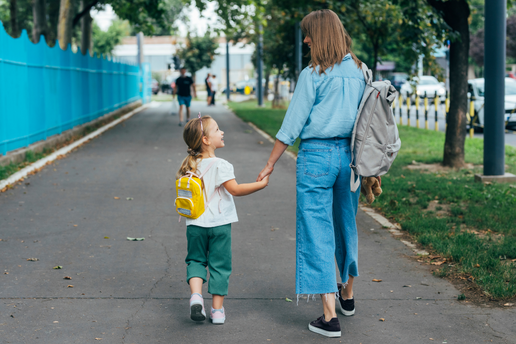 Adopted, foster and kinship kids often struggle with new experiences and relationships. Truthfully, transitions and change are scary to most folks, but our kids who have been exposed to trauma, abuse, or neglect have heightened sensitivities to change. The impacts of their trauma require predictability, connection, and routine to settle those fears and navigate life. How can we ease the transition to a new school year for our kids?
Adopted, foster and kinship kids often struggle with new experiences and relationships. Truthfully, transitions and change are scary to most folks, but our kids who have been exposed to trauma, abuse, or neglect have heightened sensitivities to change. The impacts of their trauma require predictability, connection, and routine to settle those fears and navigate life. How can we ease the transition to a new school year for our kids?
12 Tips for Easing the Transition to a New School Year
1. It all feels new.
Even if your child has been in the same building for several years, remember that this new school year will still be new. Carve out some emotional space as summer winds down, so they can feel safe to express the stress about all the new things they are anticipating.
2. New = Unsafe.
For our kids who have histories of trauma, we must set an expectation for ourselves that new = unsafe. It doesn’t matter to our child’s hypervigilant brains that the teacher had his sibling two years ago. The start of a school year means that everything is new to our kids – the teacher, paths through the building, classrooms, the blend of peers, the schedule, and so on.
 3. Shift Your Schedule.
3. Shift Your Schedule.
Ease your child’s transition from summer break brain to school year brain by shifting your schedule before the first day. Shift it gradually by changing the bedtime and wake-up time over several weeks, especially if you have late sleepers who have been enjoying the lazy, hazy days of summer.
4. Make a Practice Run, or Three.
Drive to the school or walk there together a few times before the year starts. Follow the likely bus route if you know it. Ask your child questions while you are practicing the route that will help her express her anxieties or excitement.
 5. Take a Tour.
5. Take a Tour.
Call the school and request a tour or walk-through before classes start – especially if it’s a new building for your child. It’s a great time to talk with the principal or other support staff that are there, without the chaos of other students present.
6. Schedule a Meeting.
Request a meeting with the child’s team or teacher to do some introductions. Some kids will want to participate and even lead the meeting with a power point about themselves or a hand-written note “All About Me.” Others will be reticent to share much at all. Figure out what is in your student’s comfort zone and go with it.
Advocating for Your Foster or Kinship Child at School
7. Map it Out.
Download a map of the building for your older kids to get familiar with the routes they need to follow between classes. If you have access to their schedule online, highlight the routes they will need to take from class to class. Ease their minds with reassurances that everyone is late the first few days of school so they should expect that teachers will be helpful about the learning curve.
 8. Give Them a Voice.
8. Give Them a Voice.
Host a family meeting to review morning and after-school routines to allow your kids some voice in the matters. Talk about the routines you all followed last year and get their input on what changes might be considered.
9. Set a Predictable Routine.
After the meeting, consider how to practice the routine by easing into the physical practice of how to get up, get ready, and get to her classroom. Whether your child uses an alarm to wake or prefers you wake her, your routines should be repeatable, predictable, and sustainable for you all.
10. Post the Schedules.
Post visuals of the new routines and allow plenty of time to practice, practice, practice the new or different parts of the schedule. For your pre-readers or kids with prenatal exposure, clipart or photos of your child performing each step of the routine can be extra helpful.
 11. Consistency is a Priority
11. Consistency is a Priority
During the back-to-school transition, keep as many things consistent about your daily family life as you can. Don’t mess with Taco Tuesday or Friday Family Movies — at least not for the start of the year!
12. Reach Out Proactively.
Proactively connect with the teachers and staff who will be interacting with your student to talk about the issues that might be challenging for your kids, like “All About Me” essays, baby picture assignments, family tree projects, or Punnett squares. Also, consider what activities and transitions in the classroom could be triggering for your student and discuss them with the teachers or team involved.
This post was originally posted by Creating A Family on July 21, 2022. View the original post here.


